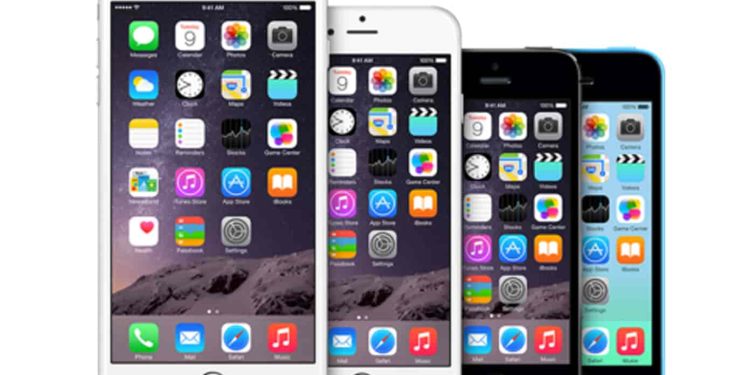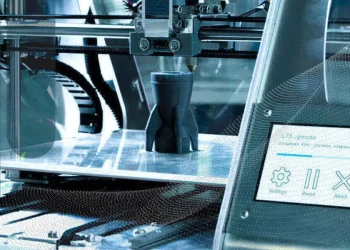The iPhone has been around for 12 years – the first iPhone was released in 2007. Yet Apple has already sold over 2.2 billion units 1. These are incredible sales numbers and indicate how ubiquitous iPhones – and smartphones in general – have become.
But the iPhone is also symbolic of our wasteful culture. With a mere two-year average lifecycle, smartphones are more or less disposable 2. Apple estimates that only around 900 million iPhones are currently in use worldwide 3.
This means that over 1.3 billion iPhones have already been discarded – just 12 years after the product first entered the market. What does this wastefulness mean for the environment? Are we doing enough to handle cell phone waste responsibly?
My experiences as the co-founder of SMR Worldwide – an e-waste recycling company – give me a unique perspective on the supply chain of cell phone waste. Using this perspective, I will try to shed some light on what happens to a phone after it is dead for good.
The Landfill Problem
According to an EPA study published in 2009, only around 9% of discarded mobile devices are collected for recycling every year 4. This study is from 10 years ago, so I like to think things have improved a lot since then.
However, even today, phones are most likely discarded mobile phones end up in landfills. , is highly harmful to the environment since these phones contain heavy metals like Lead, Mercury contains and Arsenic 5, and other materials like Lithium-ion batteries and plastics. , is also wasteful because the Copper, Gold, Silver, Aluminum, etc. contained in these devices go unrecovered.
Landfilling cell phones is by far the biggest issue when it comes to managing cell phone waste. We must be more proactive in making sure our old phones are collected for recycling. There are many ways you can do this:
- AT&T, Verizon, and T-Mobile all have recycling and trade-in programs
- You can drop your old phone into an EcoATM for cash
- The Apple Store accepts old phones for trade-in via mail or at the store
- Best Buy stores accept old phones for recycling
- The Cell Phone Recycling Process
Cell phone recycling in the US is a fairly efficient process. Most companies engaged in the trade and movement of cell phone waste in the US are governed by the Responsible Recycling (R2) or the e-Stewards standards and are regularly audited. Nevertheless, there is yet a long way to before we can say we handle cell phone waste well.
The Circular Economy of a Mobile Phone
The complete supply chain of cell phone waste is quite complicated. So I’m focusing on just 3 main components:
1). LCD Screens
The majority of cell phone screens can be reused – they don’t need to be recycled. At SMR, we test every LCD screen we receive for cracks and bleeds. Screens that are in good shape are sent to manufacturers of electronics like coffee machines, IP phones, printers, etc. that have smaller and lower quality screens.
The mobile phone LCDs are cut into the appropriate shape and put into these brand new products. As you can imagine, it is a very efficient way of giving these screens a second life. The screens are kept out of the landfill and the manufacturers save the cost and energy required to make brand new screens.
However, if the LCDs are cracked or bleeding, they cannot be reused. They have to incinerate by companies specialized in handling materials with mercury content (like LCDs, fluorescent lamps, dry cell batteries, etc.).
The incineration process can release gases that can cause acidification of air and global warming 6. However, many of these gases are captured before they can reach the atmosphere. Hence, this is generally considered the best available method to dispose of broken LCDs.
2). Lithium-ion Batteries
99.3% of all Lead Acid batteries (like old car batteries) get recycled 7. However, only about 5% of Lithium-ion batteries get recycled 8. The rest end up in landfills.
Li-ion recycling plants are costly to build and require sophisticated equipment to treat harmful emissions generated by the smelting process 8.
On the flip side, the demand for Li-ion batteries is increasing at an alarming rate, because of the increasing number of electric cars, laptops, mobile phones, etc. being sold every year. We are also facing a worldwide shortage of raw materials like Cobalt 9. If we don’t figure out Li-ion recycling soon enough, we are heading towards a great global crisis.
Li-ion recycling is a hot topic for research and development these days. Academics all over the world are working on solving the issue, while companies like Tesla are working on closed-loop recycling programs to completely recycle and reuse all the batteries they put in their cars 10.
3). Printed Circuit Boards (PCBs)
PCB recycling is a highly lucrative industry. Many PCBs contain valuable metals like copper, silver, gold, and palladium – mobile phone PCBs, especially, have high concentrations of these metals. At SMR, our circuit boards are recycled by a multinational PCB manufacturer.
This company recovers these metals from PCBs at scale through hydrometallurgical processes and uses the recovered metals to print brand new circuit boards to be put in laptops and other electronic devices 11. But, there is a massive drawback to this process. Only the metals get recovered. The leftover fiberglass on which the boards are printed and other non-metallic parts generally end up in the landfill 12.
Conclusion
Cell phone recycling practices aren’t perfect. The Lithium-ion battery recycling process, especially, has a long way to go. That being said, most cell phone components are recycled effectively and lead to the recovery of many valuable resources. We, in the US, also have a healthy refurbishment and reuse market for mobile devices. This extends the lifecycle of mobile devices significantly.
References
- https://www.lifewire.com/how-many-iphones-have-been-sold-1999500
- https://www.fastcompany.com/90165365/smartphones-are-wrecking-the-planet-faster-than-anyone-expected
- https://www.idownloadblog.com/2019/01/30/900-million-iphones-milestone/
- https://www.epa.gov/sites/production/files/2015-09/documents/20130621-13-p-0298.pdf
- https://www.e-cycle.com/cell-phone-toxins-and-the-harmful-effects-on-the-human-body-when-recycled-improperly/
- https://www.ncbi.nlm.nih.gov/pubmed/27679968
- https://www.recyclingtoday.com/article/battery-council-international-lead-battery-recycling/
- https://cen.acs.org/materials/energy-storage/time-serious-recycling-lithium/97/i28
- https://www.reuters.com/article/usa-lithium-electric-tesla-exclusive-int/exclusive-tesla-expects-global-shortage-of-electric-vehicle-battery-minerals-sources-idUSKCN1S81QI
- https://cleantechnica.com/2018/06/07/yes-tesla-recycles-all-of-its-spent-batteries-wants-to-do-more-in-the-future/
- https://www.researchgate.net/publication/279557352_Recovery_of_precious_metals_from_electronic_scrap_by_hydrometallurgical_processing_routes
- https://www.epa.gov/sites/production/files/2014-05/documents/handout-10-circuitboards.pdf










